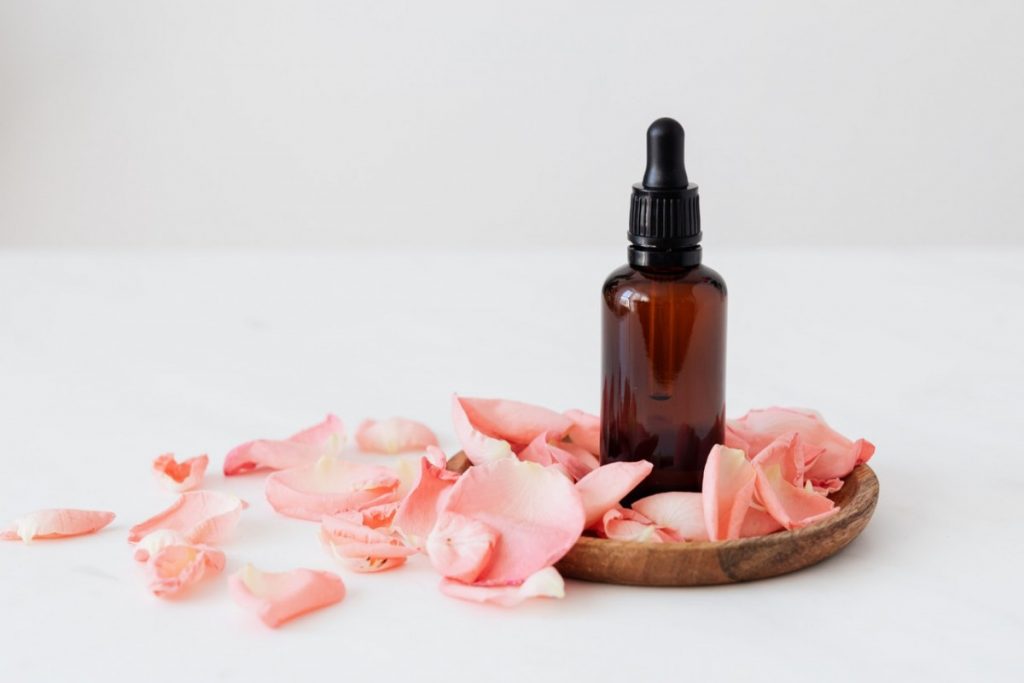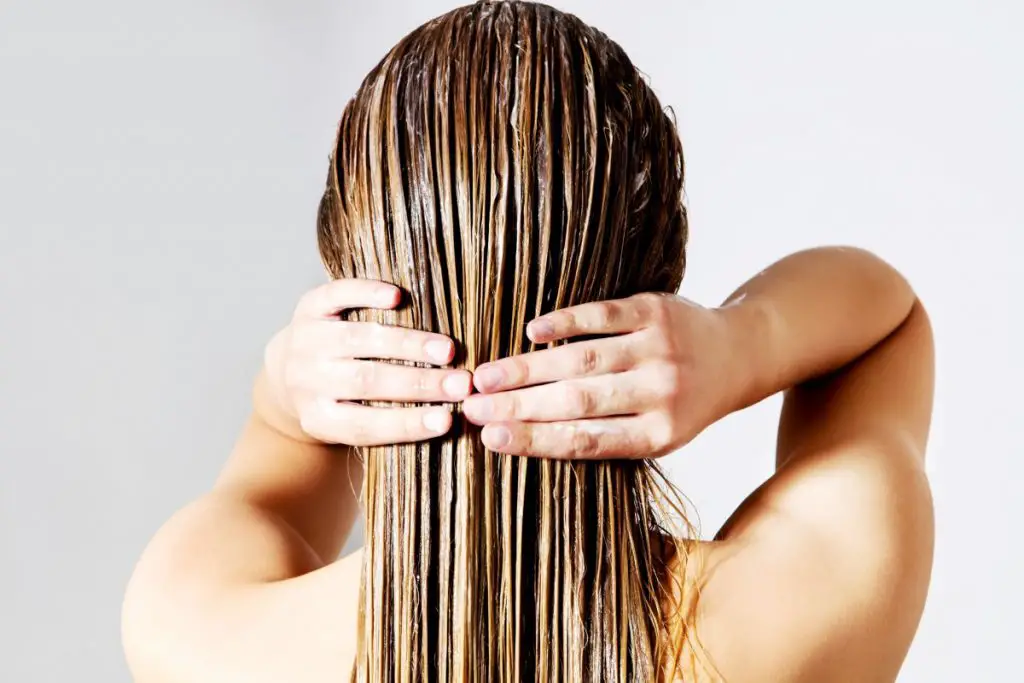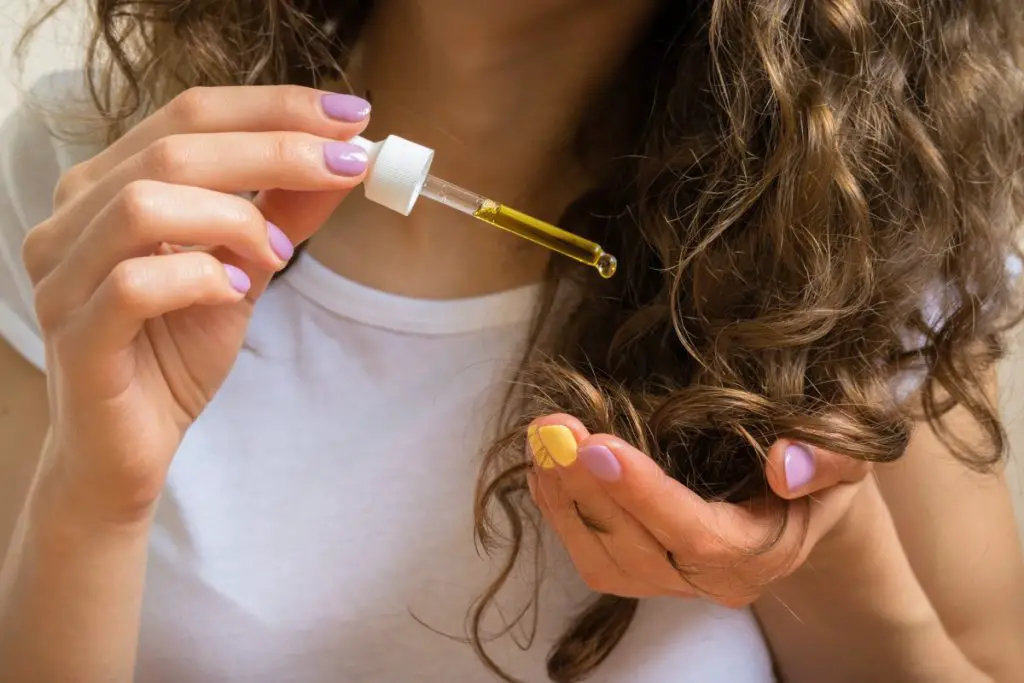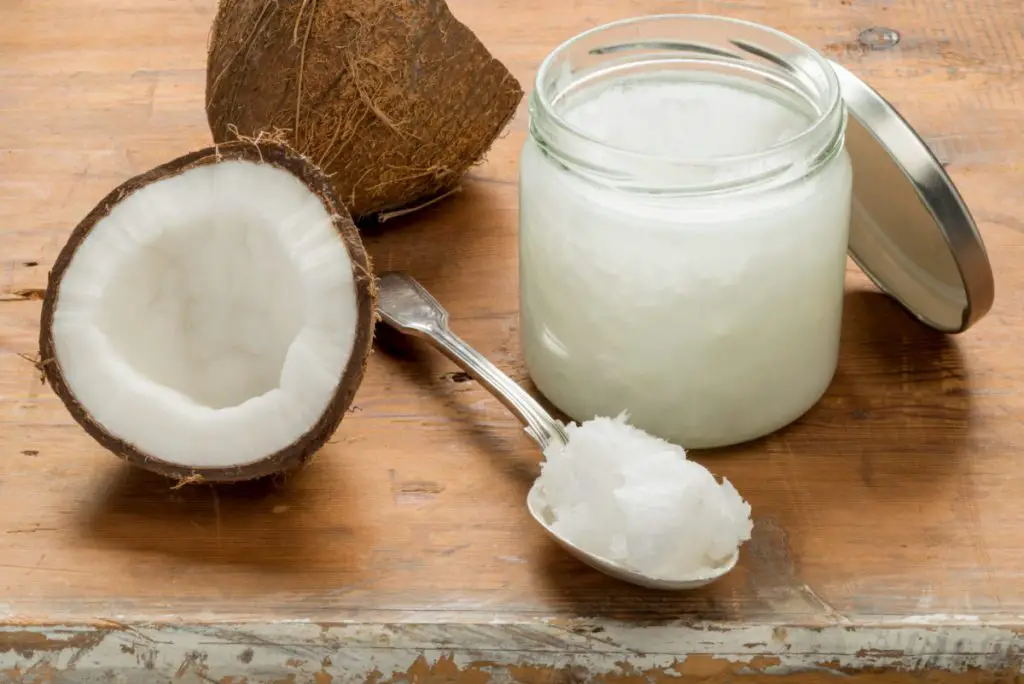
Coconut oil does not remove hair dye. It protects hair from fading by reducing protein loss that damages your hair. Coconut oil does help repair the damaged cuticle that protects the embedded color.
Poor dye application, hair damage, sulfate shampoos, and sun damage are the main factors for color loss.
Coconut oil has become all the rage, with obvious benefits such as lotions, moisturizers, hair care, and internal health benefits. The restorative benefits of coconut oil to hair are well documented in scientific journals and glamour posts alike.
Yet somewhere along the line, coconut oil became associated with accelerated loss of hair dye color.
Documented scientific studies have proven that only coconut oil can reduce protein loss in hair out of extensive testing of mineral and sunflower oils (which are in many of the branded hair care products.)
To understand how a hair dye loses its color, let’s first examine what happens when we dye our hair.
Table of Contents
How Does Hair Dye Work?

The human hair shaft is surrounded by a protective layer called the cuticle. The cuticle is the visible part of your hair and made up of abundant compressed fibers called keratin abundant in the hair cuticle.
These transparent keratin fibers take up to 5-6 layers of interlocking scales that wrap around the inner hair shaft and make up a layer of protection.
Because your hair cuticle is the outermost layer, it is where damage such as split ends or breakages show up. Damage causes the interlocking keratin fibers to no longer be able to close.
A closed and flat cuticle reflects light and is what gives healthy hair its shine and gloss.
Almost all permanent dyes are oxidative hair dyes work by lifting the interlocking fibers of your hair cuticle to deposit the color in the hair’s core.
This lifting of the cuticle fibers is achieved by ammonia or diamine toluene that blasts the cuticle open and allows the dyes to react with hydrogen peroxide and deposit color into the hair shaft.
With frequent hair dying, ammonia that is meant to open the cuticle fibers then penetrates the hair shaft’s inner core and damages the tyrosine-protein that is responsible for maintaining and producing natural or even holding dyed pigment.
Semi-permanent dyes are less invasive and do not penetrate your hair’s inner core but color through an acidic dye on the outside of your hair shaft. Depending on whether they use hydrogen peroxide or not determines the amount of damage to your hair cuticle.
Watch this video below to know how does hair dye work:
How Does Coconut Oil Work in Hair

Out of many varieties of hair oils, coconut has the unique quality of mimicking the hair’s natural lipid structure and can penetrate further into the hair.
Coconut oil is a triglyceride composed of lauric acid and has a low molecular weight with a straight linear chain and can penetrate the hair shaft more successfully than other oils.
Due to its greater penetration into the hair shaft, it does not repel water like many oils that merely coat the hair’s surface. Other hair benefits include:
- Prevents the hair shaft from becoming waterlogged. One of the overlooked primary damage causes of hair is water. When the hair is damaged, the water penetrates the shaft and causes it to swell. The swelling and contraction of the hair shaft cause the keratin “scales” to become loosened and expose the hair color to damage.
- Reduces protein loss. Scientific studies have shown that coconut oil can substantially reduce protein loss in damaged and undamaged hair when used before and after washing your hair.
- Reduces frizz and tangles. Because it penetrates the hair shaft and provides oil to the hair’s outer cuticle, it makes hair more manageable to comb and style.
What Are the Real Causes of Fading Hair Dye?

Here are some of the real causes of why your hair color is fading. Let’s take a look at them below.
Incorrect Color Application
One of the essential factors in the longevity of your hair color is the correct application procedures. Each hair fiber should be well covered, and the dye must stay on the hair long enough to properly penetrate the hair shaft. The wrong peroxide volume may also affect the colors lifespan in the hair shaft.
By washing your hair too soon after dyeing can also loosen the color pigments, especially sulfate-based shampoos with Sodium Laureth sulfate (SLES), a common chemical found in hair shampoos.
Ideally, you should wait 72 hours before shampooing your hair again after you have rinsed out the dye.
Hair Damage
If your hair has suffered damage such as other chemical treatments or sun and styling damage, it will be less equipped to hold on to dye pigments. When your hair cuticles suffer damage, they do not close properly to seal your hair cortex from external harm.
The hair shaft becomes more porous and leaves the pigments within the shaft more vulnerable to being lost prematurely.
Water Exposure
Believe it or not, one of the biggest reasons your dye fades early comes from the water itself. With your cuticles damaged by the ammonia during the opening process during dyeing, the hair shaft’s cortex becomes exposed to water. Water may then pull the color molecules from your hair, and then wash away.
Shampoos won’t strip your color on their own, but the sulfates in them can strip your hair of protection and allow water to penetrate the shaft and lose color.
Sun Damage
UV damage is also a contributing factor to the color loss in hair. The UV rays penetrate the damaged hair cuticle and break down the color molecules. This damage causes the color shade to alter, and the intensity of the color is lost.
Some Colours Fade Faster than Others
Specific hair dye colors have a shorter lifespan than others. The red shades, such as red, plum, and auburn, have smaller color molecules and thus are more easily lost or washed out. They are also more susceptible to UV radiation than other shades, which also affects their longevity.
Pure browns and blacks have larger color molecules and resist fading while blonde has little color at all, so they won’t easily fade (but they can become brassy instead)
How Can You Keep Your Hair Color Longer?

Here are some suggestions on how to keep your hair color longer and prevent it from fading away faster. Some of the suggestions include:
- Prepare your hair before coloring. Ensuring your hair is healthy as it can be before the dyeing process can help you retain your hair color. Try a deep treatment or two in the week before you dye your hair. Well-conditioned hair absorbs color better, and you can also help prevent cuticle damage during the dyeing process.
- Avoid using hot water to rinse your hair. Hot water rinses can speed up the color loss process, whereas cool water keeps the hair color and makes for smoother hair.
- Avoid sun and chlorinated water. UV rays can penetrate your hair shaft and bleach your color of vibrancy. Chlorine strips your hair cuticle and exposes the cortex (and color) to damage. Think of wearing a swimming cap or a sun hat when you are outdoors in summer.
- Use color-enhancing products. There are special products available that are specially formulated to help hair that has been damaged by the dyeing process. There are also products containing a small amount of your hair dye color that can maintain your hair’s vibrancy.
- Choose the right color. They always say you should pick a hair color similar to your own by a few shades, that way you can save money (and hair damage) caused by frequent touch-ups. It is also easier to grow out. Red shades are the quickest to fade.
How Do You Apply Coconut Oil?
Stary with a small amount of about one teaspoon size and gently massage through your dry hair, starting in the middle and working your way towards the ends.
Ideally, you should aim to leave it on your hair for 20-30 minutes or overnight if your hair is severely damaged. Wash the oil off with a non-sulfate-based shampoo.
Coconut oil may weigh your hair down and lead to a greasy appearance when used in excess and should be used less frequently for people with fine hair. Read more about here if you’re looking for an in-depth tutorial.
Conclusion
Next time you seek an explanation for your fading hair color, look to your color application, hair routine, and lifestyle. Coconut oil should be used once to twice a week for maximum benefits (less if your hair is thinner) or as a pre-wash and post hair dye wash.
Rethink permanent dye if you can, or find non-ammonia based environmentally friendly hair dye that won’t destroy your healthy hair and the planet in the process.



